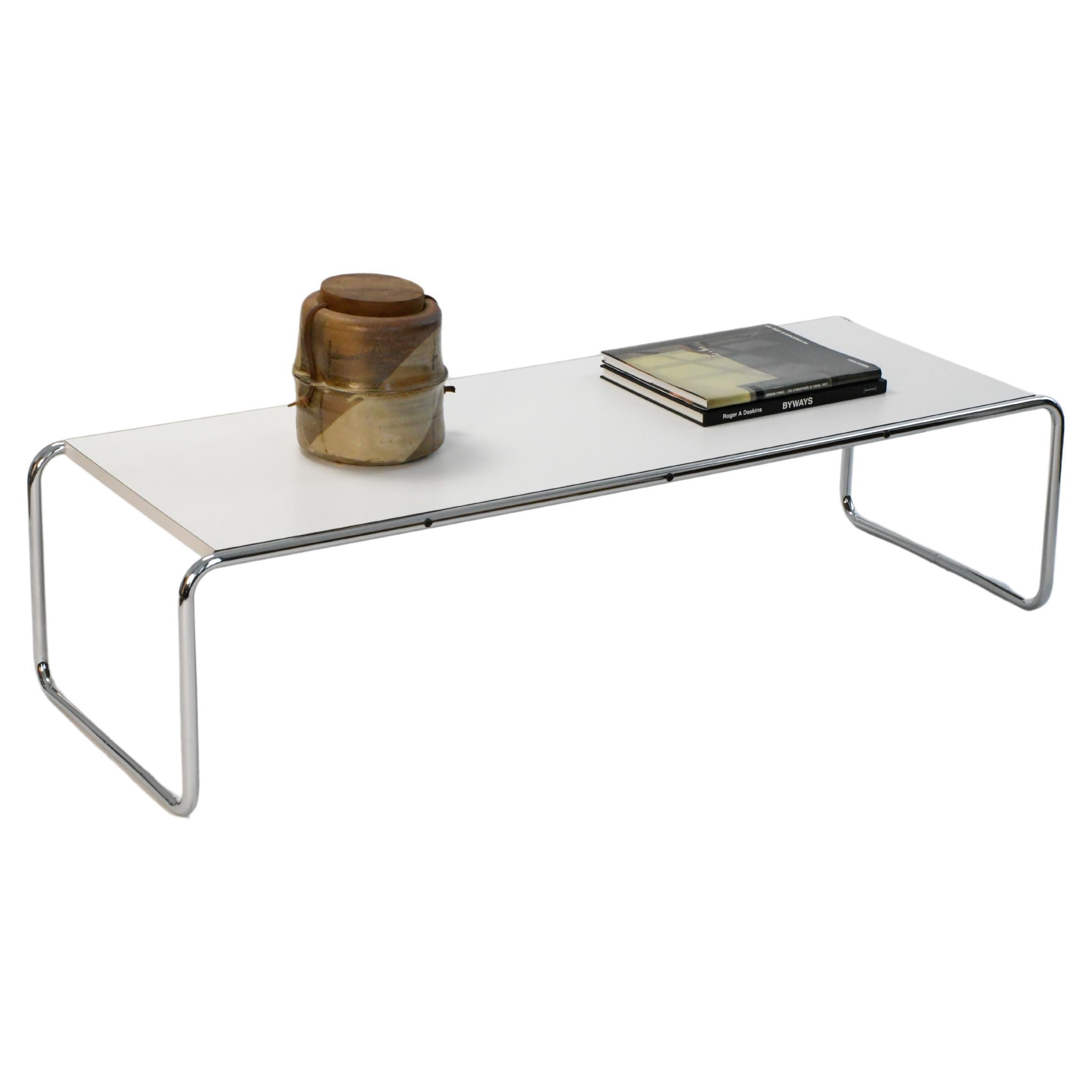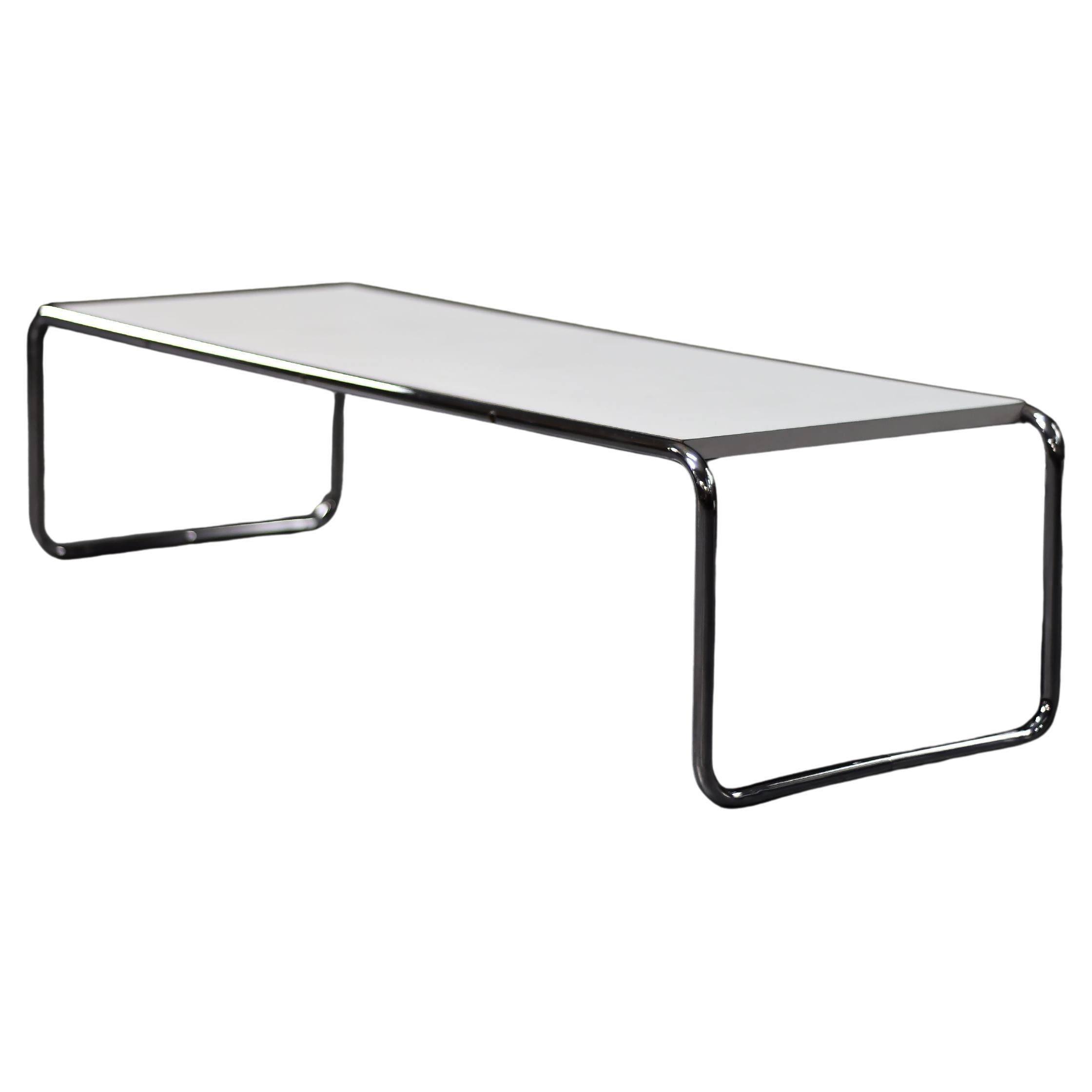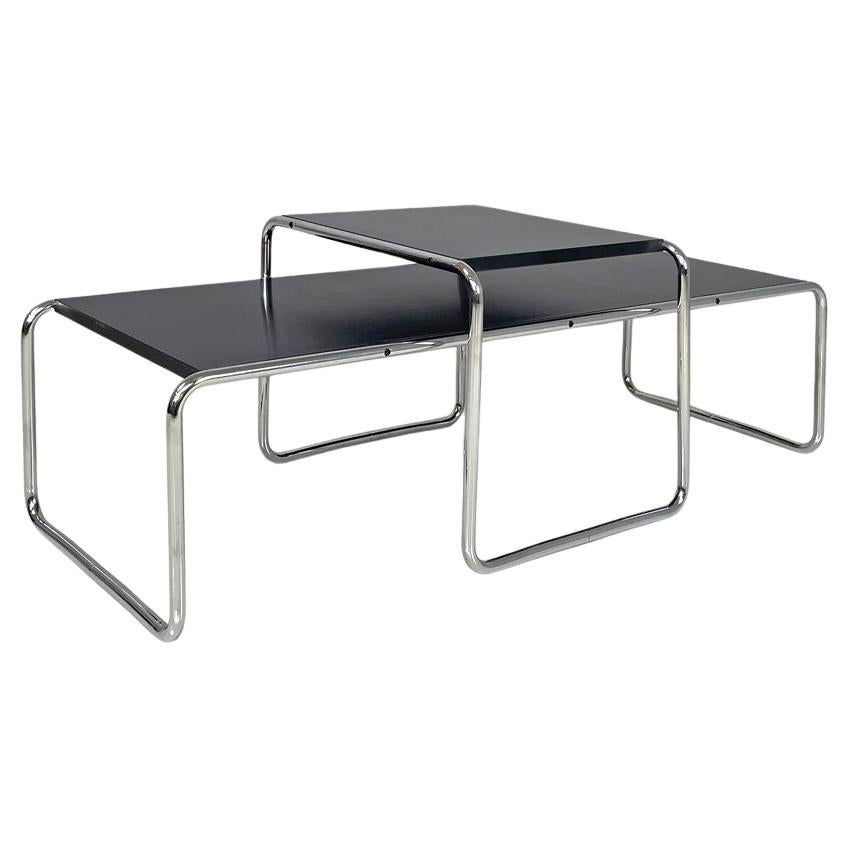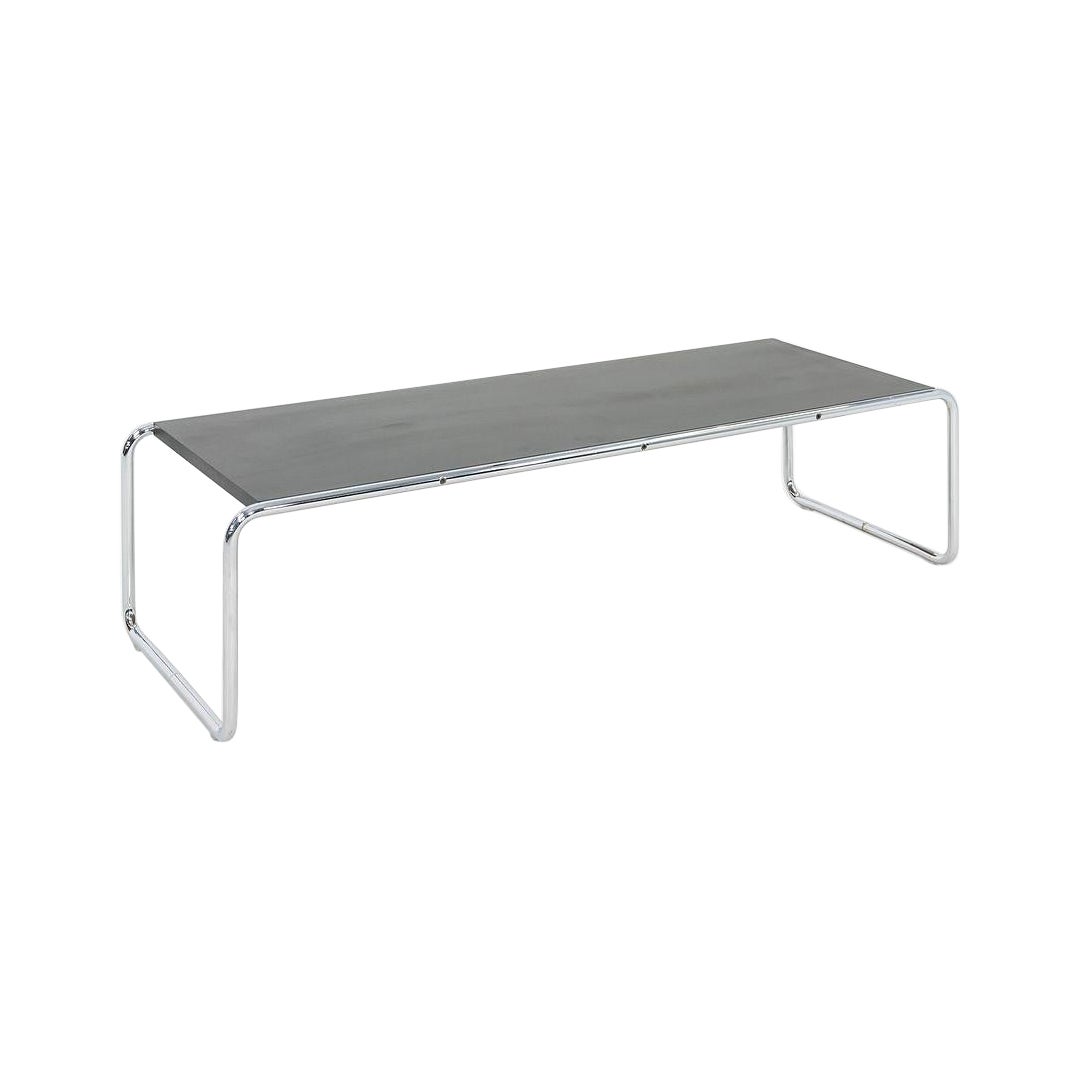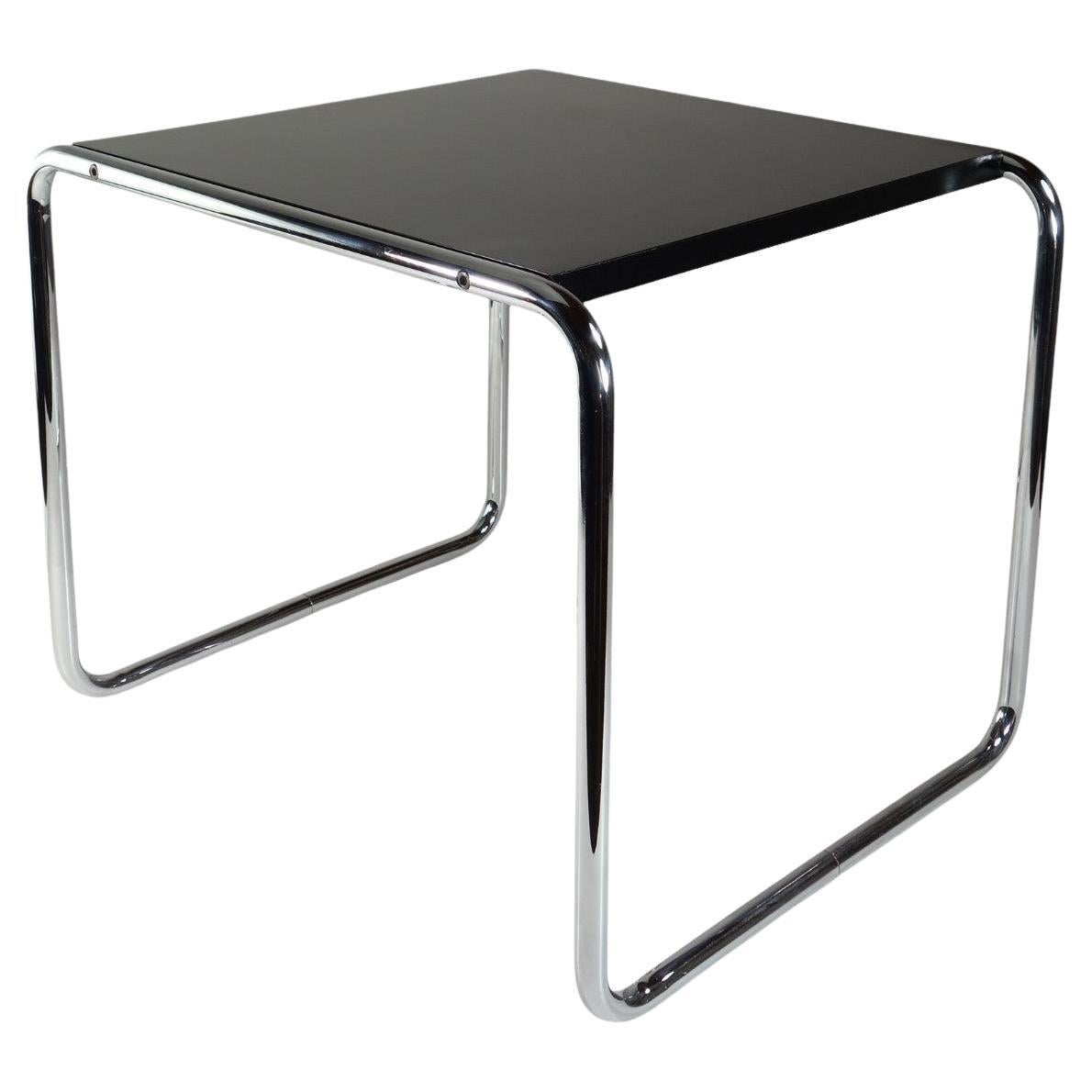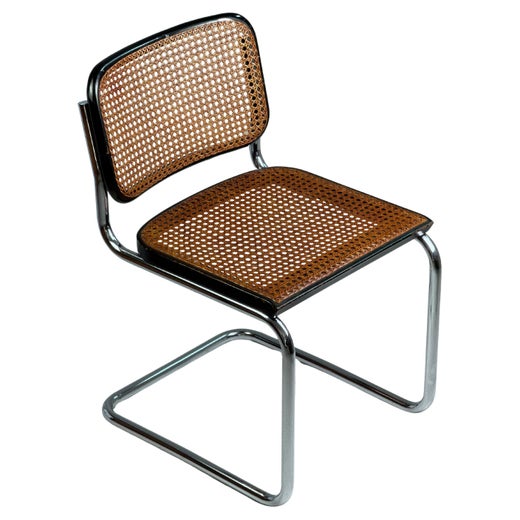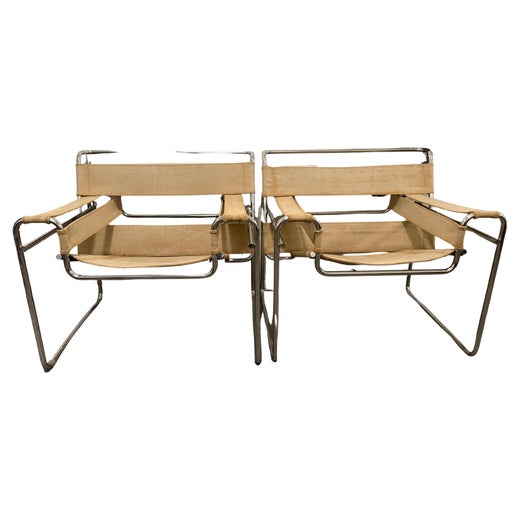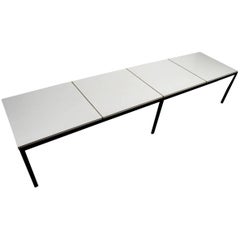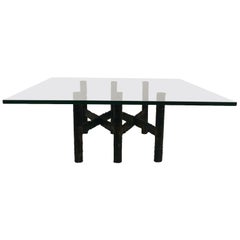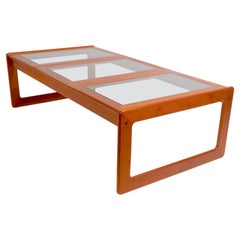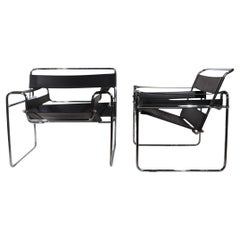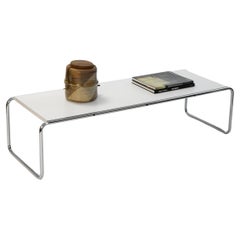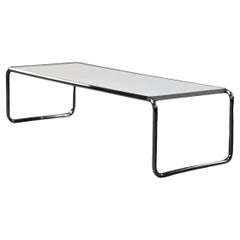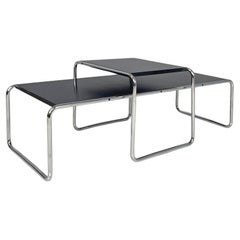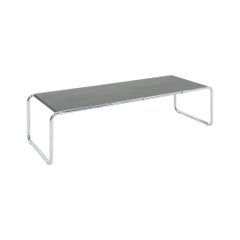3 Breuer Designed Tables Made in Finland by Stendig 1 End Table 2 Coffee Tables
About the Item
- Creator:Marcel Breuer (Designer),Stendig Co. (Manufacturer)
- Design:Laccio Coffee TableLaccio Series
- Dimensions:Height: 13 in (33.02 cm)Width: 53 in (134.62 cm)Depth: 19 in (48.26 cm)
- Sold As:Set of 3
- Style:Bauhaus (In the Style Of)
- Materials and Techniques:
- Place of Origin:
- Period:
- Date of Manufacture:1970s
- Condition:Wear consistent with age and use. Original, clean and ready to use, top of white coffee table shows minor wear, normal and cosmetic wear, normal and consistent with age.
- Seller Location:New York, NY
- Reference Number:1stDibs: LU978724409692
Marcel Breuer
The architect and designer Marcel Breuer was one the 20th century’s most influential and innovative adherents of modernism. A member of the Bauhaus faculty, Breuer — like such colleagues as the architects Walter Gropius and Ludwig Mies van der Rohe, and the artists and art theoreticians László Moholy-Nagy and Josef Albers — left Europe in the 1930s to champion the new design philosophy and its practice in the United States.
Born in Hungary, Breuer became a Bauhaus student in 1920 and quickly impressed Gropius, the German school’s founder, with his aptitude for furniture design. His early work was influenced by the minimalist Dutch design movement De Stijl — in particular the work of architect Gerrit Rietveld.
In 1925, while he was head of the Bauhaus furniture workshop, Breuer realized his signature innovation: the use of lightweight tubular-steel frames for chairs, tables and sofas — a technique soon adopted by Mies and others. Breuer’s attention gradually shifted from design to architecture, and, at the urging of Gropius, he joined his mentor in 1937 on the faculty of Harvard and in an architectural practice.
In the 1940s, Breuer opened his own architectural office, and there his style evolved from geometric, glass-walled structures toward a kind of hybrid architecture — seen in numerous Breuer houses in New England — that pairs bases of local fieldstone with sleek, wood-framed modernist upper floors. In his later, larger commissions, Breuer worked chiefly with reinforced concrete and stone, as seen in his best-known design, the brutalist inverted ziggurat built in New York in 1966 as the home of the Whitney Museum of American Art.
Breuer’s most famous furniture pieces are those made of tubular steel, which include the Wassily chair — named after Wassily Kandinsky and recognizable for its leather-strap seating supports — and the caned Cesca chair.
Breuer also made several notable designs in molded plywood, including a chaise and nesting table for the British firm Isokon and a student furniture suite commissioned in 1938 for a dormitory at Bryn Mawr College. Whether in metal or wood, Breuer’s design objects are elegant and adaptable examples of classic modernist design — useful and appropriate in any environment.
Find vintage Marcel Breuer seating, storage cabinets and lighting on 1stDibs.
Stendig Co.
Stendig Co. played a pivotal role in introducing modern European furniture to the American market, thanks to the business acumen of founder Charles Stendig.
Around 1950, the Brooklyn, New York–born Stendig (1924–2024) worked for Raymor, a purveyor of modern china and accessories that is best known for distributing designer Russel Wright’s American Modern line of ceramics. While at Raymor, Stendig focused on the company’s less popular pieces that were made in Italy and Scandinavia, recognizing their potential for the American market. In 1955, he left the company and decided to establish Stendig Co.
That year, a chance encounter with a Finnish trade representative led him to furniture company Asko — one of the largest companies operating in Scandinavia. Asko invited him and Joseph Carreiro, a professor at the Philadelphia College of Art (now the University of the Arts), to help refine their designs.
At Asko’s production facility in Finland, Stendig met several renowned Finnish designers such as Ilmari Tapiovaara, Tapio Wirkkala and Eero Aarnio, the iconic Ball chair creator. Stendig’s trip there was a success, and Stendig Co. began importing Finnish furniture to the United States.
In 1956, the first Stendig Co. showroom opened in Manhattan. A year later, during a trip to Zurich, Stendig came across a Bauhaus–inspired furniture store featuring pieces by Swiss designers Kurt Thut, Hans Eichenberger and Robert Haussmann, the store’s co-owner. Following a meeting with Haussmann, Stendig became the retailer’s exclusive U.S. distributor.
Throughout the late 1950s and early 1960s, Stendig Co. imported and sold furniture from influential European designers, including Swiss designer Bruno Rey, Italian architect and industrial designer Vico Magistretti and Hungarian-American architect and designer Marcel Breuer, creator of the Wassily lounge chair.
By the late 1960s, Stendig Co. moved its headquarters to an expansive space on Manhattan’s East Side and opened showrooms in Los Angeles, San Francisco and Chicago, each home to the company’s striking collection of mid-century European armchairs, sofas, dining room chairs, coffee tables and other furnishings. Stendig’s founder was by then representing Italian manufacturers Poltronova and Gufram and bringing revolutionary works of Italian Radical design to American shores.
In 1971, Charles Stendig sold the company to Burlington Industries. He retired in 1976. Today Stendig’s European imports are coveted by interior designers and vintage furniture collectors, and he will be forever known as the man who introduced modern European design to the United States.
Find a range of vintage Stendig Co. furniture on 1stDibs.
- ShippingRetrieving quote...Shipping from: Cohoes, NY
- Return Policy
More From This Seller
View AllMid-20th Century American Mid-Century Modern Coffee and Cocktail Tables
Steel
Vintage 1960s American Brutalist Coffee and Cocktail Tables
Iron
Mid-20th Century Danish Scandinavian Modern Coffee and Cocktail Tables
Glass, Teak
Mid-20th Century Italian Bauhaus Lounge Chairs
Chrome
Mid-20th Century American Mid-Century Modern Coffee and Cocktail Tables
Walnut
Mid-20th Century Italian Mid-Century Modern Coffee and Cocktail Tables
Metal, Brass
You May Also Like
Late 20th Century Italian Mid-Century Modern Coffee and Cocktail Tables
Steel, Chrome
Vintage 1960s Italian Bauhaus Coffee and Cocktail Tables
Chrome
Vintage 1970s Italian Modern Coffee and Cocktail Tables
Metal
Vintage 1970s American Modern Coffee and Cocktail Tables
Steel
21st Century and Contemporary American Modern Coffee and Cocktail Tables
Steel, Chrome
Vintage 1960s Italian Bauhaus Coffee and Cocktail Tables
Chrome
